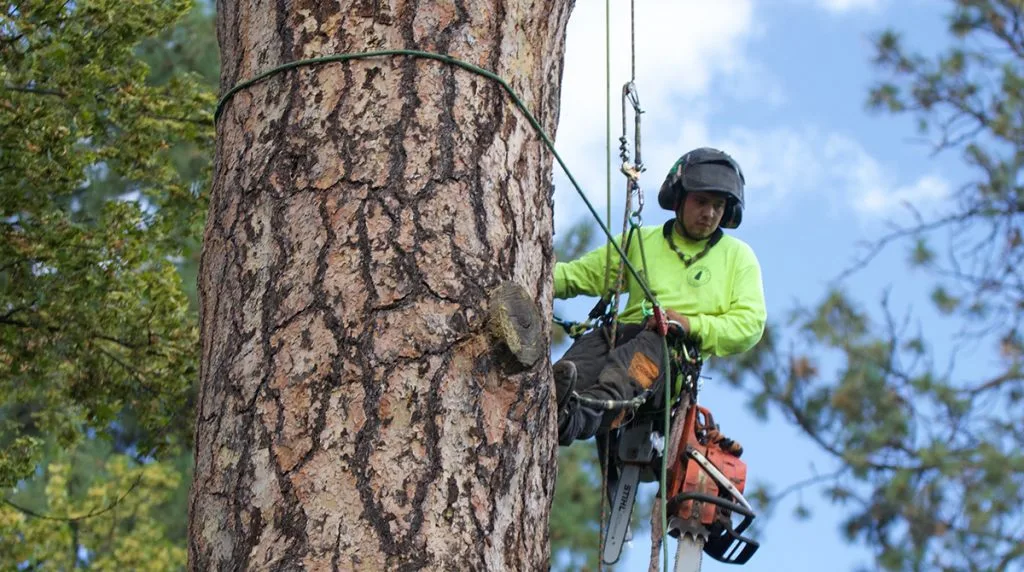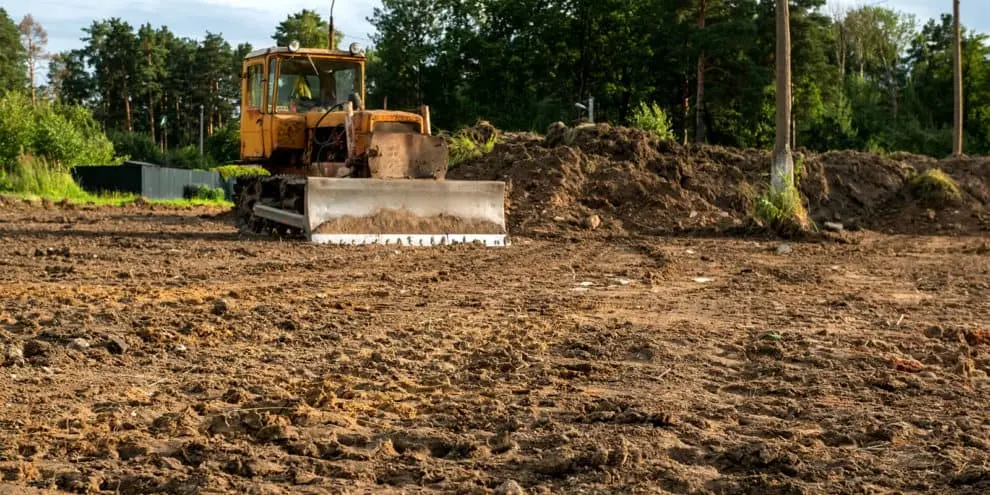Introduction to Arborist Reports
An arborist report is like a health check for your trees. It's written by an arborist, a tree doctor, who knows everything there is to know about keeping trees healthy and safe. This report is requested for many reasons. You may need to get a building permit, or you may be worried about a tree's health in your yard. The report will tell you about the tree's condition, if it's sick, how it might affect nearby structures or other plants, and what to do about it. It's not just some paperwork; it's a guide to help you make informed decisions about your trees. Whether you're building, selling, or just taking care of your property, an arborist report can be crucial.
How an Arborist Report Can Benefit You
An arborist report isn't just paperwork; it's the key to making informed decisions about your trees. Whether planning construction projects or managing a property, this report offers insights you can pay attention to. It shows the health of your trees, identifies any diseases or pests affecting them, and suggests ways to care for them. This means you can protect your trees from unnecessary harm and ensure they keep adding value to your property. Plus, if you're dealing with city regulations or permits, an arborist report often ticks the boxes required by local laws. In short, it's a practical tool for intelligent property management and planning.
What Triggers the Need for an Arborist Report?
You might wonder why you'd need an arborist report in the first place. Well, it's not always because something's wrong. Various situations can trigger the need for this detailed tree check-up. Are you planning to build or renovate your home, or do you have trees nearby? Local authorities often require an arborist report to protect any significant greenery. Or, if you've got a tree looking a bit sick, an official report can diagnose the problem and suggest ways to save it. Buying or selling a property? An arborist report can give peace of mind about the health and safety of the trees on the land. These reports are also crucial when dealing with tree-related legal or insurance issues. In short, an arborist report covers you, whether for construction, health diagnosis, property transactions, or legal matters.
Understanding the Arborist Report Process
When you need an arborist report, you're taking a crucial step to understand the health and status of the trees on your property. This process starts with finding a qualified arborist. They're like tree doctors. Once you've got one, they'll visit your place to check out the trees. They'll look at the tree's health, structure, and any potential risks it might pose. After the assessment, they write up the arborist report. This document will cover everything from the tree's condition, recommended care, and even legal implications if the tree's condition affects public spaces or neighbor's properties. Getting this report can be essential for property development, insurance purposes, or just ensuring your trees are happy and healthy. Remember, this isn't a one-and-done deal. Trees change, and so might their assessment over time.
Critical Components of an Arborist Report
An arborist report is more than just a bunch of tree facts thrown together. It's a detailed document for specific purposes, like when planning to build near trees or dealing with tree law issues. What does this report include? First off, it's got the tree assessment. This is where the arborist takes a close look at the tree's health, potential hazards it might pose, and its overall condition. Think of it as a tree check-up. Next up is tree identification. This part lists the type of trees on the site, their sizes, and locations. It's like marking X on a treasure map but for trees. Another crucial section is the impact assessment. Say you plan to build something; this section tells you how your project could affect the trees and vice versa. It's all about living in harmony. The report also offers maintenance recommendations. It's not just about identifying problems but also suggesting solutions, like how to prune correctly or deal with diseases. Finally, it includes protection measures during construction, ensuring those green giants are safe while humans do their thing. In short, an arborist report is your go-to for understanding and protecting trees during any land development or construction project.
How to Request an Arborist Report
First, getting an arborist report isn't like asking for a coffee; there's a process. You start by finding a certified arborist. "Certified" means they know their trees inside out, backed by an official body. Once you've got your arborist, it's time to reach out. A phone call or an email works fine. Be clear about why you need the report. Is it for construction permission, or are you worried about a tree's health? The more details you give, the better. The arborist might want to see the site and the trees in question. This visit isn't just a walk in the park. They'll look at the tree's health, how it grows, and what's happening around it. After the visit, the arborist gets to business and writes the report. They'll cover what they saw, what it means, and what you should do next. Remember, arborist reports aren't free. Costs vary based on the job's complexity and the tree's story. So, when you reach out for that report, know it's an investment in getting the right advice.
Preparing for the Arborist's Visit
When you book an arborist, you're taking a step toward the health of your trees and property. Before their arrival, clear any clutter from around the base of the tree or trees. This includes toys, garden tools, and anything else that might get in the way. It's not just about politeness; it makes their inspection safer and more thorough. Be ready to share any concerns or questions about your trees. You may have noticed changes in leaf color, unusual growth patterns, or signs of disease. This info helps the arborist focus on potential issues. They might also want access to your backyard or other areas where the trees are, so ensure all gates are unlocked. Lastly, have an open mind. Arborists offer expert advice on tree care, which can sometimes include suggestions you still need to consider, like pruning or even tree removal for safety. Remember, their goal is to ensure and promote the health of your trees and the ultimate safety of your property.
Timeline: From Request to Receiving Your Report
When you decide to get an arborist report, the question of how long it will take from start to finish is standard. Generally, the timeline is broken down into a few key steps. First, you reach out to a professional arborist to request their services. This can be done over the phone or online. Expect them to reply within a day to set up an initial visit. During this visit, the arborist will examine the tree or trees in question, take notes, and possibly take photos. This initial consulation can take 30 minutes up to a couple of hours, depending on the size of your property and the number and condition of the trees.
After the initial assessment, the arborist will return their findings to the office to prepare your report. This step involves analyzing the data collected, consulting additional resources, and compiling the findings into a comprehensive document. Depending on the arborist's workload and the complexity of your case, preparing the report can take a few days to a couple of weeks.
Once your report is ready, the arborist will mail it to you or deliver it digitally, depending on your preference and policy. Finally, they offer to discuss the report's findings with you in person or over a call to ensure you understand everything and answer any questions you might have.
So, from the moment you request an arborist report to the moment you have it in your hands, ready to review, the process can take anywhere from a week to a month. This timeline is flexible and can vary based on the arborist's schedule, the time of year, and the specific requirements of your report.
Interpreting the Findings of Your Arborist Report
When you get your arborist report, it's packed with information that might seem complex. But don't worry, it's easier to understand than you think. First, your report will include an inventory of trees on your property. It's like a list. Each tree is assessed for its health, species, and size. Think of it as a health check for your trees. Next, the report will highlight any disease or pests affecting the trees. It's like diagnosing what's wrong if they need to be in top shape. Arborists use terms that may sound medical because they're essentially three doctors. The report will also talk about soil conditions. Just as we need a healthy environment to thrive, so do trees. Poor soil can mean poor tree health. Lastly, you'll see recommendations. This part is actionable. It tells you what needs to be done, like pruning sick branches or removing a tree that might fall. Think of it as a prescription for ensuring your trees stay healthy or get better if they're ill. Understanding your report is about knowing what's happening with your trees and how to help them. It's straightforward once you break it down.
Next Steps After Receiving Your Arborist Report
Once you've got your arborist report, it's time to move forward. Typically, this document lays out the health of your trees, any diseases or pests affecting them, and recommendations for care or removal. Here's what to do next. First, review the recommendations carefully. These could range from simple maintenance to more drastic measures like tree removal. If anything seems unclear, feel free to contact the arborist for clarification. Next, if the report suggests maintenance, schedule these tasks as soon as feasible. This might involve pruning, treating diseases, or applying fertilizers. You'll likely need to get permits from your local government for removals, so start this process early. Sometimes, the report might suggest replanting. If that's the case, consider the recommended species of trees that will do well in your local climate and soil conditions. Lastly, think about long-term care. Your arborist can guide you on a maintenance schedule to keep your trees healthy for years. Remember, this report is a guide, not just a checklist. Use it to make informed decisions about your landscape.




